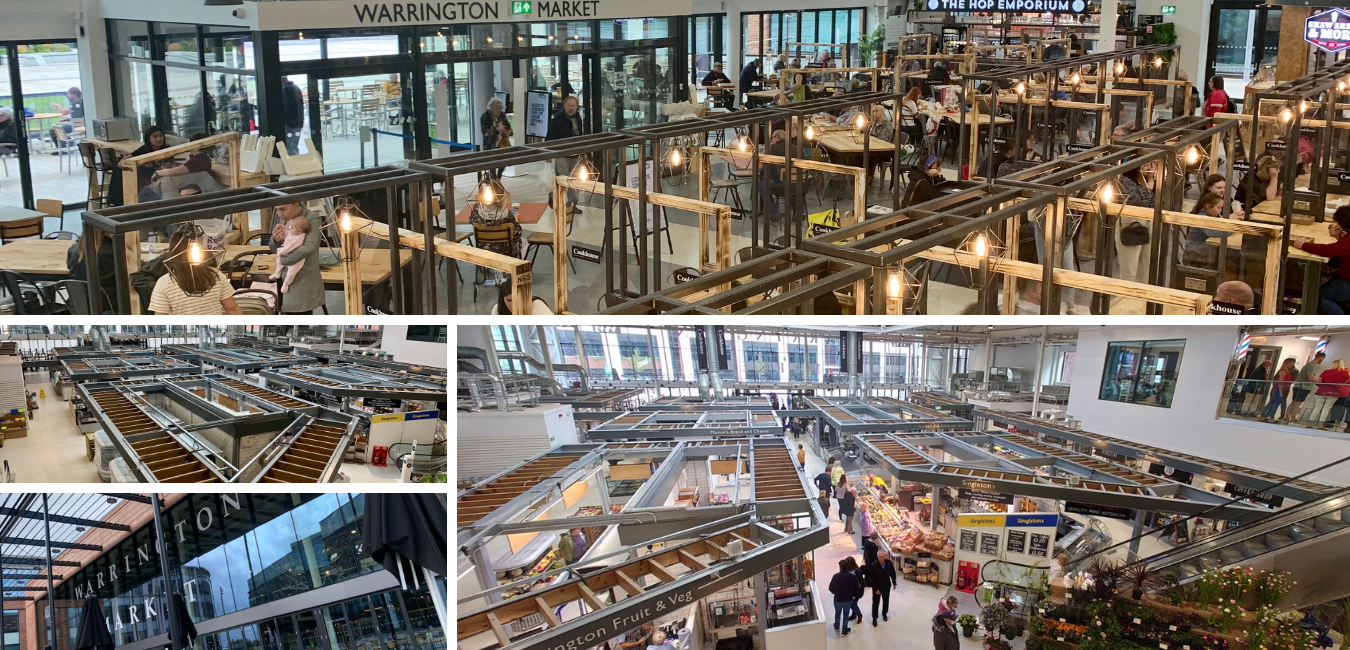The earliest evidence for a fair in Warrington is a charter dated 20 October 1255, when the population of the town was no more than 700 people. The charter grants the 7th Baron of Warrington, Sir William Fitz Almeric le Boteler, the right to hold:
"A three day fair yearly at his manor of Wherington, on the eve, day and morrow of translation of St Thomas the Martyr, and also a market on Wednesdays."
The medieval market
Later, King Edward I granted two more charters. One in 1277 added a weekly market on Fridays and a winter's fair on the feast of St Andrew. And one in 1285 said that the baron could hold a weekly market on Wednesdays and extend the July fair by five days.
A Royal Charter was important to the landowner as it meant they could charge rents and tolls to the sellers and it protected them from other market operators. This protection still exists as, under common law, the holder of a market charter can take action against anyone who opens, or tries to open, a market within 6 and 2/3 miles of its charter market.
By the middle of the 15th century the population of the town had increased to about 1,300 people and, even though travelling was hard, Warrington’s markets and fairs were known far and near. The lanes around the market became so crowded with stalls and animals that an open space had to be made in the north west corner of the crossroads. On early maps this was called the ‘forum’, and later the ‘corn market’.
The rights to collect tolls on these markets and fairs remained with the barons of Warrington, and later with the lords of the manor, until 1856 when the new corporation bought them from John Ireland Blackburne, the then Lord of the Manor.
The Victorian market
Three years later the Warrington Improvement and Market Act said the corporation could hold and maintain a market, and could also to build on any land purchased under the powers of the Act, or on any land forming part of any street. The buildings were market houses and places for the sale of cattle, hay and other articles.
After much debate a new market hall for meat traders was built in 1856, which was an impressive brick and stone building.
It was extended in 1873, adding a cast iron-framed fish market hall. Later, a glass-roofed general market hall was built on land behind the Barley Mow Inn.
The market in the 1960s-1970s
By the late 1960s, the Victorian market halls had become outdated and they couldn’t meet the modern standards of health and hygiene. It was impossible to build a new market around the old without stopping trading for a long time.
When Warrington became a New Town, the town centre was redeveloped and the market was moved to Bank Street, where it would provide a counterbalance to the new Golden Square shopping centre.
The new market was designed on three levels, based on the natural fall of the ground, meaning that each floor came out at ground level. It gave service access to the back of shops on Bridge Street via a tunnel from the basement. The roof was designed so that it didn’t need structural supports taking up space in the middle of the market halls. The roof had a system of pyramid units (36 in all), glazed only on one side to distribute light evenly. The building opened in July 1974, at a cost of £1.5 million pounds.
The temporary market
In 2015, the Time Square development was approved, which includes the building of new council offices, new retail units and restaurants, a cinema, and a brand new market hall.
The old market hall was subsequently demolished and most traders moved into the temporary market building next door, housed in a unit that would eventually become Gravity, a children’s trampolining adventure playground.
The 54-stall temporary market opened on 2 September 2017 and was well received by both traders and the public winning the National Association of British Market Authority’s Best Small Indoor Market Award in 2019. It allowed the market team to experiment with a food court arrangement of 8 fast food outlets served by 164 seats, as well as variable opening hours and external events.
The 2020 Market
Construction of the new permanent market, as part of the larger Time Square redevelopment that included new council offices and 13 screen cinema, commenced soon after demolition of the old market.
The new state-of-the-art market opened on the 6th July 2020, during the 2020 Covid-19 pandemic, and consists of around 60 business units on the ground floor and mezzanine levels.
The Cookhouse is a a new 14 outlet food court, able to serve 400 customers and stay open into the early evening to form part of a new space that offers dining and entertainment.
Keeping the old façade that fronts onto Bridge Street, the market maintains part of the towns history and ties it back into the main shopping street, hopefully being part of the regeneration for that area.
The market hall is split between the main hall on the ground floor and the mezzanine level that runs around the top. On the ground floor we have traditional market businesses such as butchers, fishmongers, greengrocers and clothing stalls, while the upper floor offers more personal services such as as nails treatments, hairdressers and a tattoo and piercing studio.
